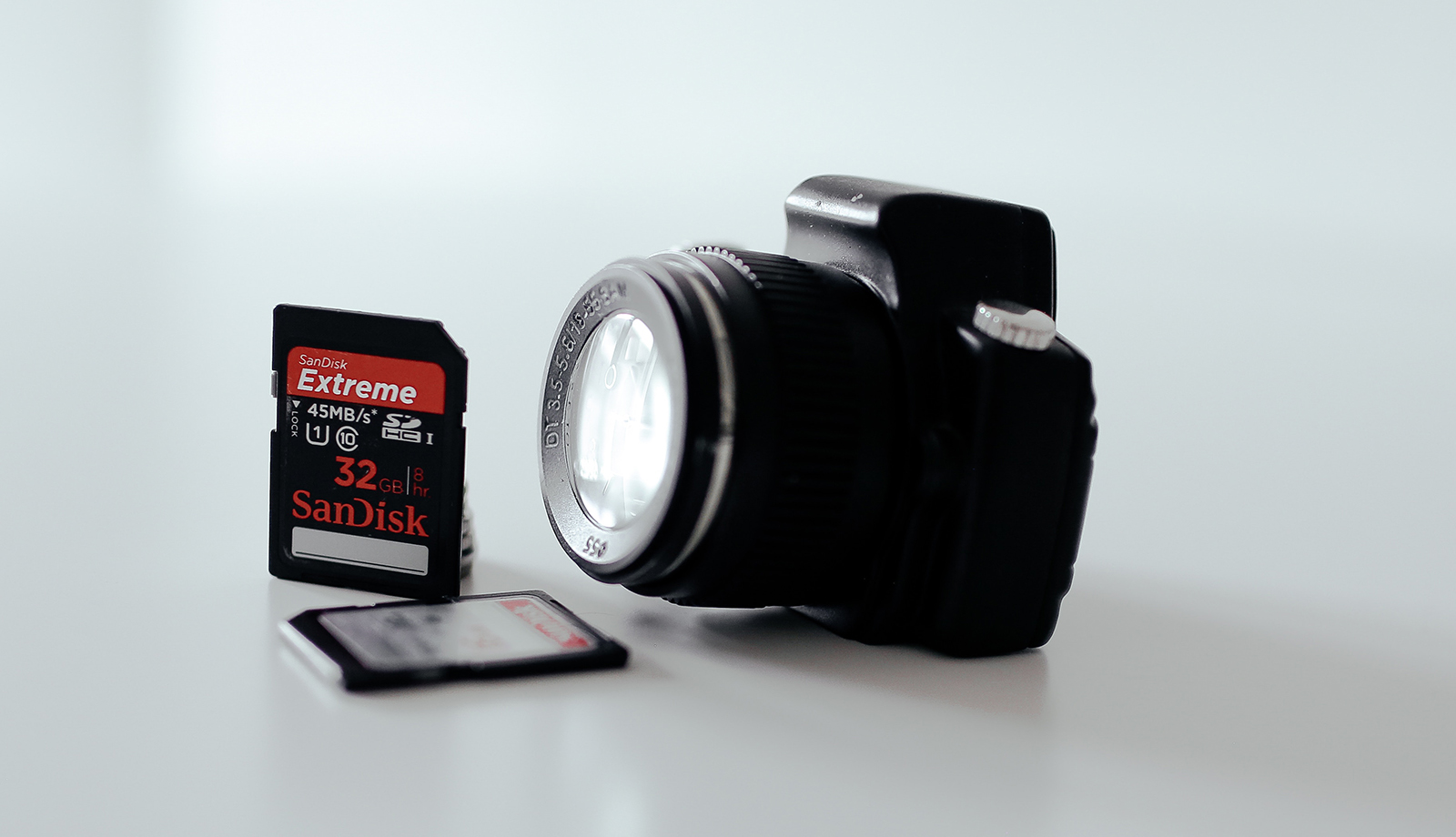
SD Express vs. CFexpress
Throughout the history of photography, new films, new processes, and new ways of doing things are an almost continual phenomenon. In the digital age, file formats and recording media are added to this list of things that change.
With the introduction of Nikon’s Z6 and Z7 mirrorless cameras, photographers were introduced to the new XQD memory cards, if they didn’t already know about them. Besides the big deal that was made about the camera’s one card slot, the amazing potential of the new card type’s capabilities were very exciting.
Well, a lot of photographers are intrigued by the XQD cards and a yet newer card in the same form factor with even greater capabilities – the CFexpress (CFE) card.
It looked as though the lowly SD (secure digital) card was not going to be used much anymore, at least not by professional-caliber cameras or other high-end cameras with huge MP count sensors. However, SD is still the card of choice for some lower-end cameras, prosumer cameras, and consumer-level cameras.
But the thought that was on some photographers’ minds was whether the SD card could be improved for greater capacity and transfer speed. It seemed that the SD design cards had reached their theoretical limits, that they had peaked in capabilities. But the SD card received a huge boost with the introduction of the new SD Express.
What Is SD Express?
In the simplest terms, SD Express uses new software and physical design protocols within the same configuration of an SD card.
SD cards, using the SD and SPI protocols designed in 1999 and enhanced several times since, can only hold so much data, and can only transfer that data on and off the card so fast. If you need to hold more information or transfer it faster, one of the new card types seems to be the option.
Current SD write cards have peeked at 260MB/s and data storage at 2TB, with most being lower. The new protocol SD Express promises speeds of 985MB/s and maximum capacity of 128TB. How did they do that?
Same Form Factor, New Protocol
The method used to get past the previous limits on speed and storage is to add Peripheral Component Interconnect Express (PCIe) and Non-Volatile Memory Express (NVMe) to the SD interface. In other words, they changed the rules.
Why is this important to know? Because the new cards will be better able to handle the ever-increasing features and functions of new digital cameras. With the apparent trend leaning towards very high MP sensors and video of 4K to 8K coming to consumer-level cameras, those consumers are going to want a recording medium up to the task.
SD card shape is rather small compared to other digital media cards, and market saturation is very high. You can buy SD cards at some grocery and convenience stores. Ubiquitous is a term that comes to mind, since SD cards are everywhere, not used solely for photographic and video purposes. Smartphones, electronic data storage, and even portable computers are additional possible uses for SD Extreme.
It also means that backward compatibility may not be complete. If the new cards use a different protocol to communicate with devices, then the devices built to record on the original SD card format will not be usable with the new SD Express cards. They may fit, but without some sort of modification the camera will not be able to write to them.
Will new cameras and devices made to use SD Express be able to use older SD cards? It seems likely that some manufacturers will see the benefit of having that type of backwards compatibility. You might think of it as an old camera being able to take new and improved film. Time will tell how common any sort of backwards compatibility will be, either for the cards themselves or for the cameras using them.
What Are the Disadvantages of SD Express?
Besides the currently open-ended question of compatibility, the actual design of the SD card is on the minds of designers and users. The newer format cards XQD and CFE use a better, more physically secure construction. You might think of it as the difference between an entry-level DLSR and a professional-caliber camera. They both are capable of taking great pictures, but the pro-level cameras are heavier duty.
For some photographers, the compact size and relatively low prices of SD cards are among their best features. For other users, the cards themselves prove to be more prone to damage and data loss than they prefer. While not extremely common, card failure happens enough that there is a whole category of businesses opened to help photographers overcome those issues.
While no card format can be made completely foolproof, SD cards seem to have peaked here as well. Who hasn’t ever had an SD card corrupt their files? Sometimes, the thin, plastic cards may even fall apart physically. Again, these aren’t everyday occurrences, but they happen often enough to be a concern for photographers and videographers making their living off of digital imaging.
What Other Card Options Exist?
There are currently several different recording media available:
- Compact Flash
- Compact Fast
- xD
- Memory Stick
- XQD
Compact Flash – One of the more commonly used formats of digital for cameras and camcorders has been the Compact Flash (CF) card. It’s physically larger than an SD card and tends to have rather robust construction. Where it has possible issues is how it interfaces with the devices it fits into. A series of thin wire pins in the device or reader fit inside tiny openings in the card.
The CF card itself is study, but those thin pins are somewhat prone to damage. Admittedly, the damage is more likely to occur due to user error, but preventing that is a concern. If one or more pins get bent over or broken off, the device may not be able to record at all. User repair for this problem is not an option for most photographers, so their equipment ends up in a repair shop for however long it takes.
Another issue with CF cards for more modern equipment is that they have also pretty much already reached their upper limits for speed and storage. Writing speeds of 167MB/s and storage of 512GB is what these cards are currently limited to, which is even lower and slower than current SD cards. Since the CF card was introduced in 1995, earlier than SD cards, this isn’t all that surprising.
Compact Fast – A new protocol for the CF type cards was introduced in 2009 with the Compact Fast, or CFast, card. While improving data transfer speeds to 600MB/s, this is still a low limit compared to the SD Express and CFexpress cards.
CFast cards are used in some medium format still cameras as well as high-end digital video camera systems. The large size of CF and CFast cards has apparently discouraged some manufacturers of compact cameras from adopting the format.
xD – Fujifilm and Olympus adopted a compact card format known as xD, for extreme digital. Storage size was up to 2GB, but transfer speeds were quite slow. While the cards are still available, xD is not used by any currently made cameras.
Memory Stick – Sony still has the Memory Stick for some of their consumer-level video camcorders. Transfer speeds were fast enough for consumer-level video, but maximum storage seems to have maxed out at 64GB.
XQD – XQD is one of the newest digital card formats, primarily used by professional and prosumer-level Nikon still digital cameras and Sony video camcorders. There is a lot of buzz going on about this new card format. Huge storage capacity and extreme transfer speeds are coupled with a very safe and secure form factor.
This is great news for photographers, but it hasn’t come without some issues. The biggest concern right now is that Nikon and Sony appear to be the only camera makers currently employing XQD format. Probably not as big a concern as some first thought, since the even newer card format, CFexpress (CFE) is made in the same form factor. A simple firmware update should be all that is needed for cross-compatibility between XQD and CFE.
CFexpress Cards
CFexpress cards are made in the same size and shape as XQD cards, so there appears to be no big issue concerning the format achieving industry-wide use for still and video digital cameras. That’s good, because I personally feel we don’t need a dozen different formats for digital recording media.
That reminds me of competing still film formats of 35mm, 120/220, 65mm, 70mm, 116, 118, 126, 127, 110, and Disc. And movie films in sizes of 8mm, Super8, 16mm, Super16, 35mm, Super35, 70mm, and so on. Maybe it’s just me.
CFexpress Speed and Storage
Storage capacity and transfer speeds for CFE are mind-boggling. Especially the speed. Storage sizes of 64GB up to 256TB or more are already in the works. Transfer speeds of 8GB/s are also in current plans, with the top limit for transfer speed being open ended so far.
This is fantastic news for photographers and videographers shopping or planning for the best equipment available or soon to be on the market. In addition to medium format camera sensors already in the 100MP sensor size range, smaller format cameras such as full-frame 35mm digital format cameras are pushing close to that size, too.
Let’s not forget video, either. In addition to special purpose cinematic video cameras such as the Canon EOS-C line, many of the newest DSLR and mirrorless cameras have outstanding video modes built into them. How long before we see still imaging cameras with full-frame 4K or 8K video?
Remember, it wasn’t that long ago that video modes in DSLRs were limited to low resolution, smaller format recordings. Now, I can walk up to the counter of a full-service camera store and buy a system that wasn’t even in my imagination a mere decade ago.
CFE May Come in Several Sizes
The recording capabilities of CFE are intriguing. In fact, there are now three sizes of CFE planned for devices coming in the near future.
The original specifications for CFE were all in the same size and shape as XQD cards. But, manufacturers have been calling these cards CFE Type B since February 2019 because there are Type A and Type C cards also planned.
The CFE Type B will likely be the card of choice for many new professional-level cameras and camcorders. The XQD form factor is similar in size to the CF cards (but not identical or compatible) and is an easy fit into cameras sized similarly to what we’ve seen professionals use for a couple of decades now. And these cameras are similarly sized to the professional-level film cameras many of us grew up seeing and using.
CFE Type A will be a smaller size and a different shape. The Type A cards will not have the blazing fast speeds of Type B and XQD, but they won’t be too much slower. Imagine your next consumer-level mirrorless interchangeable lens camera with a full-frame 35mm format 75MP sensor and 4K video recording. Hey, it could happen! If it had one or two current SD cards, those would probably fill up fast. Using a CFE Type A card or two, though, might give recording times and storage size that the average high-end consumer would desire.
Type C will be a larger card. This card could conceivably replace the extra memory drives we’ve been using to complement our computer’s storage. Instead of attaching via a USB cable, perhaps these would fit into their own slot in the computer. Being larger sized, storage sizes could probably be increased, too.
The CFE card design is pretty exciting, giving promise of a lot of capability to come in the near future.
SD Express vs. CFexpress
As far as many photographers will be concerned, it appears we have two winners – for the short term at least. Two very capable and fast recording formats with tons of future potential. Which one will win out?
If history has taught us anything as photographers, then both formats could be around for a long time, coexisting in cameras made by the same manufacturers. After all, both 35mm and 120/220 films were used by professional photographers for quite a long time. It wasn’t unusual for pros to have a 35mm in their hand for one job and a 6×6 camera for the next.
Additionally, the size of the cards will likely have some bearing on what type of consumer will use each card. It hardly seems likely for a point and shoot style of camera to be set up for a larger size card such as the CFE Type B. But, if that camera maker includes high resolution video in their compact product, a card like the SD Express could be a very likely choice.
Likewise, a user of a top professional camera system wants the lowest chance of losing images or footage and may need blisteringly rapid writing speeds and huge storage capacity to get the job done. So, CFE Type B in the camera and CFE Type C in the computer would probably be preferred.
Professional vs. Consumer
So then, is that what it comes down to? A pro gets CFE and an amateur uses SDE? Well, as with all things photographic, it’s not really that cut and dried.
However, if we look at the differences under a 5600K LED lamp (as opposed to the old saying ‘in the cold light of day’), it does tend to fall in those categories.
XQD cards are already substantially more expensive than the newest crop of advanced SD cards. CFE cards will no doubt continue the higher price trend, especially since the CFE cards will probably end up replacing the XQD cards for the same uses.
As pros said in the days of Kodachrome and Agfapan, film is cheap. Likewise with memory. If you’ve already invested $20K in a new camera and a couple of lenses, then a $300 memory card is reasonable.
On the other hand, if that same $300 is near the same price of the extra zoom lens you just purchased, then a bag full of high priced memory cards might seem like overkill. While SD Express will surely cost more than current SD cards, they should be less expensive than the super capable and extremely durable CFE cards.
Which One Is for Me?
In a nutshell, the major differences in SD Express vs. CFexpress will be threefold:
- SD Express are likely to be substantially less expensive then CFexpress.
- CFE will have the edge in transfer speeds and storage capacity over SDE.
- The more durable form factor of CFE over SDE will appeal to professionals and other serious users.
Both of the new protocols are a huge leap over the recording media currently in use in many digital cameras. Besides the uses for photographic and video equipment, there will likely be other devices benefiting from the increased capacity and potential of the two new memory card formats.
















